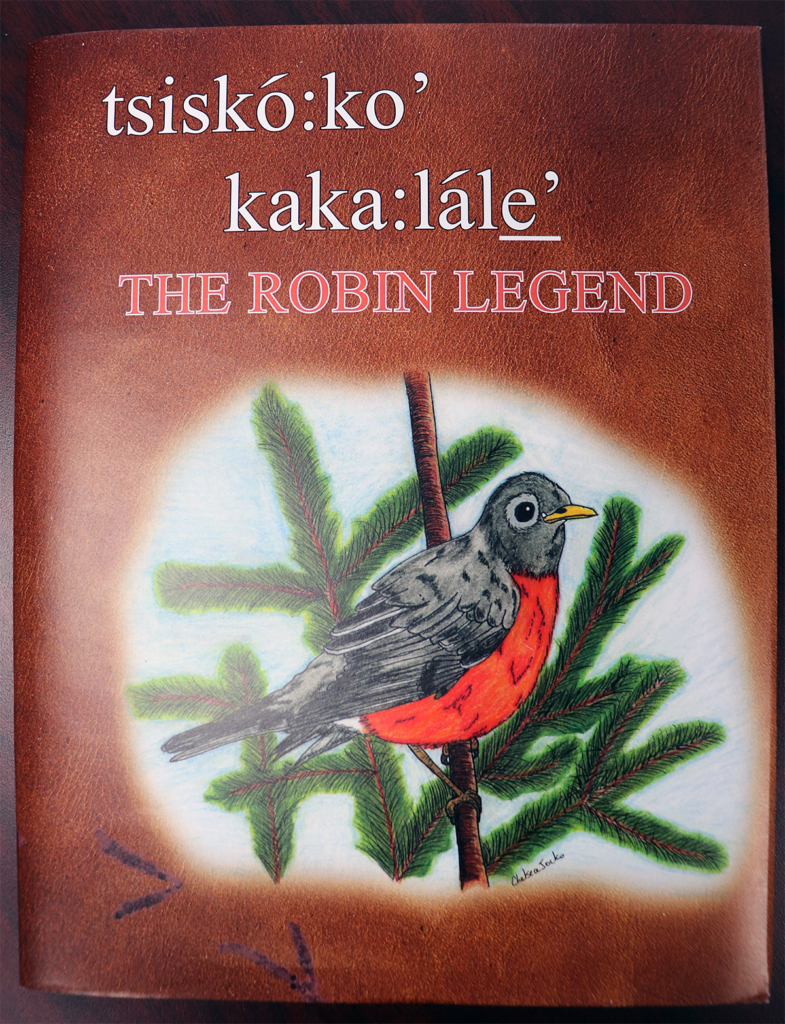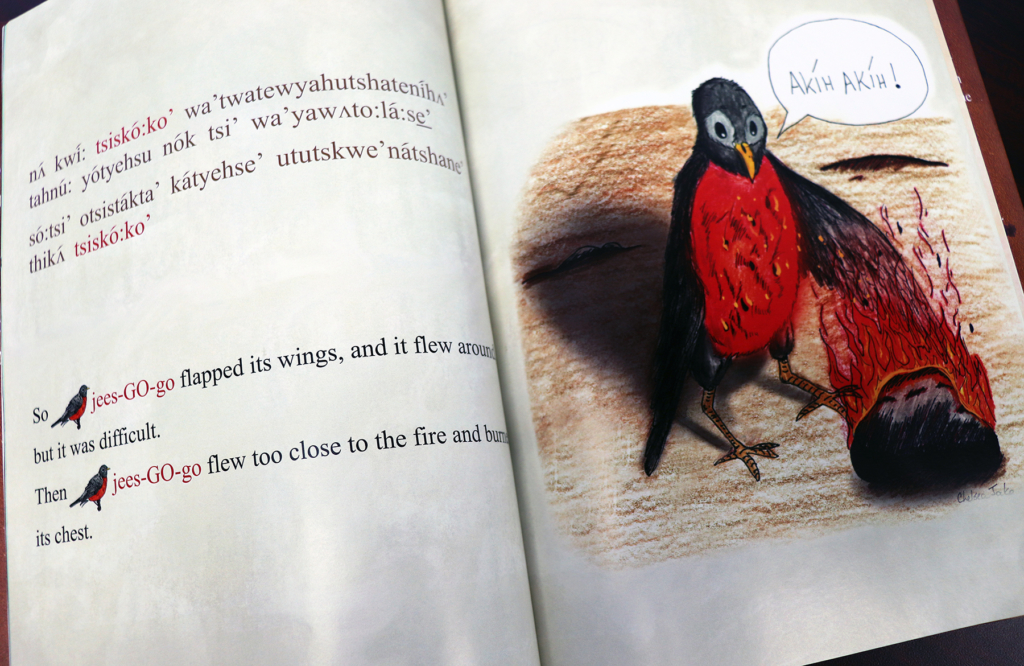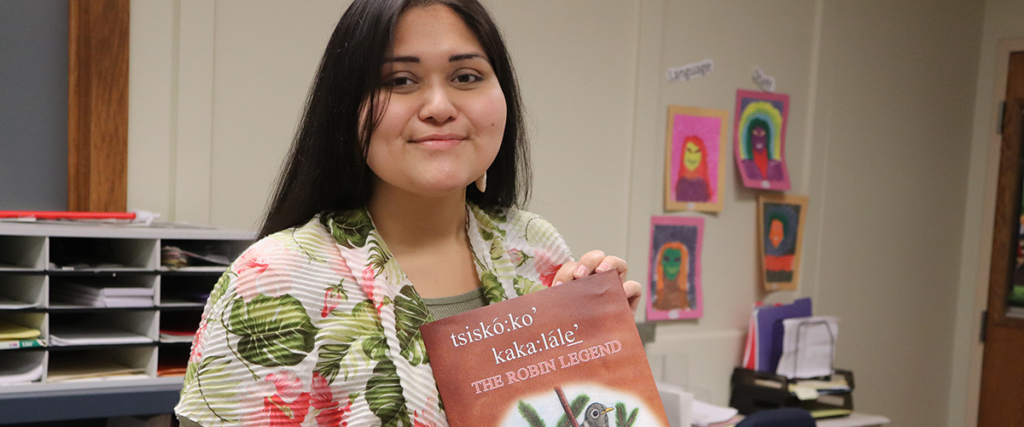THE ROBIN LEGEND
The Oneida Indian Nation released its second Oneida language-learning children’s book, The Robin Legend, continuing its collaborative partnership with Madison-Oneida BOCES to expand Haudenosaunee culture throughout the region.
Oneida Indian Nation Publishes Second Children’s Book to Expand Language Preservation Efforts
After the successful release of its first language book, The Legend of How the Bear Lost His Tail, the Oneida Indian Nation is excited to continue its language preservation efforts in partnership with Madison-Oneida BOCES.
The Robin Legend is entirely illustrated by Oneida Indian Nation Member Chelsea Jocko (Wolf Clan). It tells the story of how the Robin learned to fly again and how it got its red chest. Legends and storytelling are a significant aspect of Oneida culture, which continue to be handed down from generation to generation. Putting these largely oral stories into books will cement their legacies for generations to come. Chelsea is translating the Haudenosaunee legends “Thunder Boy” and “Spring Defeats Winter” while illustrating “How the Chipmunk Got Its Stripes.”
Projects like this are critically important to the Oneida Indian Nation’s vision of a thriving culture and community. These books will ensure the continued survival and preservation of Oneida heritage, language and culture for the next generations. Children’s books especially are a great resource for young students of all backgrounds to dive into other cultures apart from their own.


“Language preservation is paramount to keeping our culture alive for future generations and these books enable us to share our language not only with our families, but our neighbors and friends as well.
It’s incredibly special to have an Oneida contribute the illustrations for the entire book, which highlights the tremendous artistic talent that exists right here in our own community.”
– Oneida Indian Nation Representative Ray Halbritter
The Robin Legend follows the same rebus format implemented by Madison-Oneida BOCES, which features both the Oneida text and the full English translation, as well as phonetics and pictures for the Robin character. The format allows for any reader to pick up the book and learn a specific word or phrase by the end using pictures, color, and phonetics right in the middle of the sentences.
“It’s important to expose students to different cultures, backgrounds and histories, as often as possible. These stories are just an introduction to Oneida culture, but bringing these stories to print extends an invitation to the entire community to build longer-lasting relationships with our neighbors. That’s what makes partnering with the Oneida Indian Nation and contributing to the preservation of the Oneida language so fulfilling.”
– Ed Rinaldo, Staff and Curriculum Development Director for Madison-Oneida BOCES


